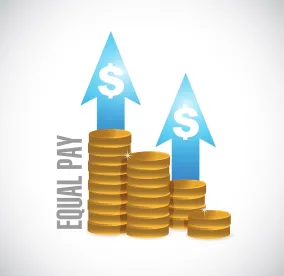On March 4, 2019, the United States District Court for the District of Columbia caught the employer community by surprise by ordering the EEO-1 pay data reporting requirement immediately reinstated.
Background
In September 2016, the U.S. Equal Employment Opportunity Commission (EEOC) announced plans to collect employee pay data from covered private employers and contractors, as an additional component to the annual Employer Information Report, or EEO-1 report. According to the EEOC, collecting W-2 wage information and total hours worked by gender, race, and ethnicity will enable the Commission to evaluate employers’ pay practices and ultimately to “prevent pay discrimination and strengthen enforcement” of federal anti-discrimination laws.
However, on August 29, 2017, the White House Office of Management and Budget (OMB), which had previously approved the EEOC’s rule changes in 2016, put an immediate stay on the EEOC’s plans to collect the additional pay data. The OMB indicated that some aspects of the expanded collection were unnecessarily burdensome for employers, and it needed time to further review the change (citing the Paperwork Reduction Act, which directs federal agencies not to overload business with paperwork). In November 2017, the Labor Council for Latin American Advancement and the National Women’s Law Center (NWLC) sued OMB, alleging that it violated the Administrative Procedure Act by moving to review a rule it had already approved.
What is happening now?
Now, just 12 weeks before employers’ submissions are due to the EEOC, the district court found the OMB provided inadequate reasoning to support its decision to stay the data collection and ruled that the previously approved revised EEO-1 form “shall be in effect.”
Unless the ruling is stayed pending appeal, employers will be required to collect not only W-2 wage information and total hours worked by gender, race, and ethnicity, but also the number of employees falling within each of 12 pay bands for each job category, ranging from $19,239 and under to $208,000 and over. Employers have been providing race and gender information, but have not been required to provide the pay data.
The looming question is whether the pay data will be required for this year’s reporting period. The EEO-1 reporting deadline is currently set for May 31, 2019, following a delay due to the government shut down. As of now, the EEO-1 survey portal has not yet been opened, and the EEOC has not issued any new instructions or guidance that is typical with the opening of the report.
It remains to be seen whether OMB will appeal the district court’s decision and seek a stay of the use of the form by EEOC pending the appeal. The EEOC could seek to further revise the reporting guidelines, but the EEOC does not currently have a quorum to act.
We will continue to monitor developments in this area. In the meantime, employers should continue to prepare to file their 2018 EEO-1 report including taking steps to be prepared to file the pay data components required by the revised form.






 />i
/>i

